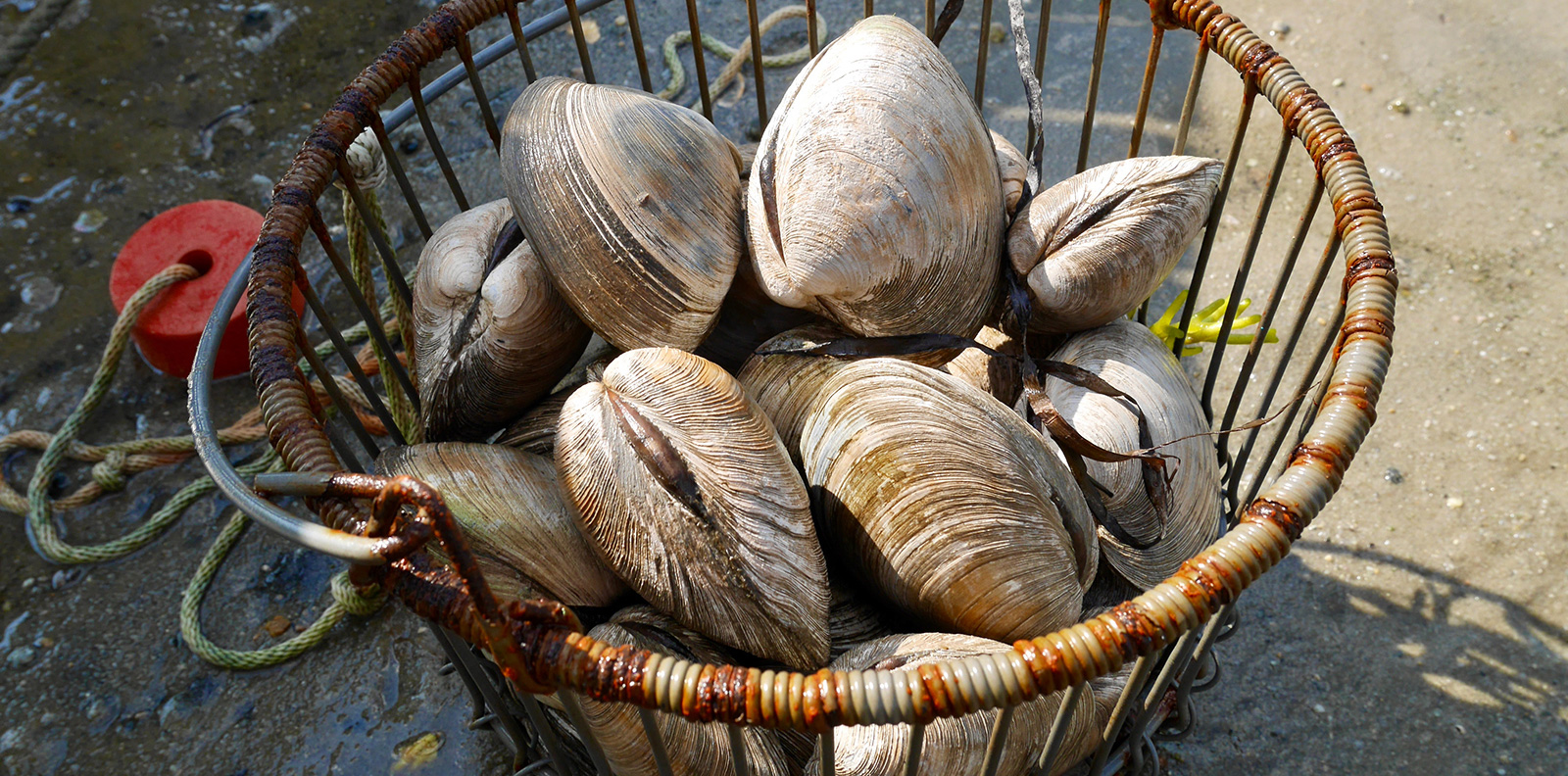Natural Stress Relief: Oysters, Both Wild and Farmed, Clean Polluted Marine Waters
November 25, 2021
Eating oysters is good for the environment, according to a pair of Narragansett Bay-centric experts. Scientists Robinson Fulweiler of Boston University and Christopher Kincaid from the University of Rhode Island’s Graduate School of Oceanography shared their latest findings during a recent webinar.
Fulweiler studies the impact wild and aquaculture oysters have on their surrounding waters. A single oyster can filter up to 50 gallons of water daily. Their most important service, and the one Fulweiler studies most, is removing nitrogen from marine waters that could trigger algal blooms.
“Aquaculture, as well as restored oyster reefs, have high rates of nitrogen removal,” Fulweiler said.
Excessive nitrogen in waters such as Narragansett Bay is dangerous for aquatic habitats and marine life, as it can feed toxic blooms. These events are also linked to low levels of oxygen in the water, which can lead to fish kills like the one in Greenwich Bay in 2003 that killed tens of thousands of fish.
Oysters, including those in aquaculture operations, help out by removing nitrogen and other pollutants from stressed waters. Instead of being biologically available to feed algae growth, the chemical used in fertilizers is released into the atmosphere as nitrous oxide. Aquaculture and restored reefs have a strong impact on denitrification, according to Fulweiler.
“Oyster aquaculture and oyster reefs are behaving similarly in terms of the nitrogen removal process,” she said.
The two biggest greenhouse gases oysters emit are nitrous oxide and carbon dioxide, and while they are powerful climate emissions, the amounts oysters release as part of denitrification are negligible. In fact, Fulweiler sees moving toward protein sources from aquaculture as key to reducing emissions generated by land-based farming.
“The take-home message is if you eat a whole bunch of oysters, the amount of nitrous oxide released into the environment is negligible compared to [if you ate] chicken, pigs, sheep or cows,” Fulweiler said.
Kincaid has spent the past 20 years tracking the movements of water and nitrogen in Narragansett Bay. A self-described “coastal plumber,” he is building a predictive computer model to use in the state’s coastal waters. Kincaid cited the 2003 fish kill as a prime reason to examine water quality, nutrient dynamics, and algal blooms.
Low oxygenated areas in the coves, harbors, and estuarine waters of Narragansett Bay have “amazingly stable” gyres, or vortexes, that move currents slowly in a clockwise direction. Kincaid and his team use Regional Ocean Modeling Systems to track these currents after accounting for tidal flows.
“We could use [this data] around aquaculture farms and predict how water flows in and out,” he said.
Nitrogen enters Narragansett Bay from the north and south. In the north, it comes from wastewater treatment plants. In the south, it comes in through massive water intrusions from Rhode Island Sound, traveling through the East Passage — the channel of water between Jamestown and Aquidneck Island.
“The amount of water coming in on these intrusions is on average twice the same amount that goes over Niagara Falls every day,” Kincaid said.
The professor of oceanography said he and his research team aren’t entirely sure what else is in some of these East Passage water intrusions besides high levels of nitrogen, but has a future study planned to investigate.
The Nov. 23 seminar was sponsored by the Coastal Resources Management Council, URI’s Coastal Resources Center, and Rhode Island Sea Grant.




Good story. Re Kincaid’s use of the word "intrusion" in this story – that word usually carries a negative context (see, e.g., the definition at https://dictionary.cambridge.org/us/dictionary/english/intrusion – "the act of going into a place or becoming involved in a situation where you are not wanted or do not belong: ".). Perhaps a better word choice would have been something like "infusion": i.e., "the act of adding one thing to another to make it stronger or better" (https://dictionary.cambridge.org/us/dictionary/english/infusion). I think that is perhaps a better characterization of the effect of the significant inflow of water from the East Passage into Narragansett Bay.
How about reducing anthropogenic nutrient inputs rather than relying on “domestic” limited genetic diversity, potentially disease-spreading, public use displacing farmed oysters?